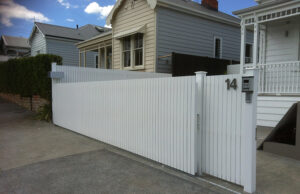
Handling your storage unit boxes with a reputed organisation is a no-brainer. Yet, it will help you protect and manage your items in the best way.
There are two significant steps from the storage unit arrangement that you shouldn’t miss. We are talking about the packing and labelling of your boxes. This material teaches you how to do these two chores like a pro.
Don’t hesitate to take into consideration our detailed top-notched guide below.
Do an inventory at the start
Nothing for some decent self-storage management works better than an excellent start. The way you begin this initiative is the way you will be able to complete it. You will keep numerous small to medium items inside your local storage facilities, and it is way better to have them packed in different units.
You can use either cardboard boxes or plastic containers. Both are ok, but the truth is that the plastic container seems to be a bit smarter idea, because through its walls you will see what’s inside.
In all cases, you need to start with an inventory to decide what, how many and how big personal belongings you will have to store professionally.
Group as many items as you can to minimise the chaos
Putting things in boxes with no logic will eventually cost you time and nerves when you decide to take them back from the self-storage unit.
To avoid this chaos, better get your inventory and start sorting out the different items. It is better to group them either by function or by season.
For instance, all kitchen appliances before removal should go inside the same plastic container and have at close to being ready for new culinary experiments right after you enter your new house.
Meanwhile, clothing, sports equipment and kids’ belongings should be better sorted out by time – summer or spring-summer season and winter, respectively, autumn-winter season.
Label your items for the storage unit permanently
It is a must to have a permanent marker for the labelling chore.
Although all storage facilities are private and no one but you will enter them to delete your notices, it’s better to protect your decent organisation in advance.
Besides, if you don’t use a climate-control self-storage unit, the changes in temperature or humidity might ruin your labelling system in the long term.

Organise your items in the boxes in the most practical way
Whether you will pack or label first, there should be decent organisation inside your boxes. Putting them all chaotically can cause damage, tears and wears.
Besides, to minimise the expenses, take the maximum of each cardboard box by following these simple but efficient packing rules:
- Ensure you always put the heaviest items at the bottom of the box;
- The lighter an object is, the higher its position in the unit should be;
- Take the maximum of the box not just to save money and space but also to avoid the movements of the objects while transporting them. No empty space inside the container should be left to avoid bumps and cracks;
- Once the box is full, tape it shut for maximum safety;
- Use the right size of the box, but if you have only small units, make sure to dismantle as many items as possible.
Colour code the boxes for the storage
You can use hinting words for the storage facility labelling system, but counting on the colour code scheme is okay. For this purpose, you should stick to a concrete shade for each group of items.
Let’s get back to those kitchen appliances and seasonal clothing storage. Use yellow for all boxes with kitchen supplies and add concrete texts – for instance, gadgets, utensils, textiles and everything else your cooking zone has.
Meanwhile, stick to the red shade for all your clothing items and write down concrete notices such as jeans, skirts, and you name it. Thus, even if not all clothing or kitchen boxes are in the same place, you can find them quickly through the colour code scheme.
Some additional tips for labelling storage boxes you should read
Last but not least, there might be some extra self-storage arrangement tricks you can use. Below, we have gathered some of the best expert-approved tips that will reduce the clutter and get you a fantastic organisation of your professionally stored items.
Read them right away:
- Not just permanent but waterproof qualities should be looked for when selecting a marker;
- If writing and choosing colours for the labelling system seems too time-consuming for you, don’t hesitate to purchase a set of ready-to-use labels for packing before a removal. Find them on the internet at a great price;
- When labelling with your own hands, make sure to use prominent symbols that are visible enough in the spacious and full-of-the-boxes storage unit for faster access;
- If you don’t use a climate-controlled storage module, the recommendation for selecting a plastic rather than a cardboard box shouldn’t be considered. The thing is that plastic is a more vulnerable material when it comes to mould development;
- Add the text signs in your inventory when labelling the boxes with concrete texts. Have one copy with you and another inside the storage unit;
- If you don’t know how to pack the glass and delicate items safely, simply use the vertical layout system. It’s the easiest way to protect them from cracks;
- For maximum safety during the storage period, make sure to require insurance included in the professional service.
Conclusion
Packing and labelling the boxes before putting them in a private storage unit are great alternatives to avoid the annoying search in future.
This arrangement also provides solid protection for your items and can reduce your expenses in many ways.
If you have questions and worries about the layout of the boxes inside your storage facility, don’t hesitate to use the company’s consultants for some expert assistance. They definitely know the best practices for safe, well-arranged and ideal storage of the boxes with your belongings.











